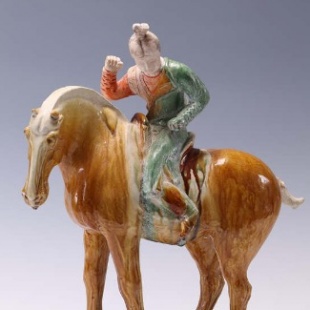Caught in an unending twirl


One frequently traded gem was fluorite, whose fluorescent light was expected to light up an aristocratic lady's boudoir by night. Another was ruby, a perfect match for gold, which replaced jade as the material of choice for the rich and powerful during the Tang Dynasty (618-907). By dint of rampant tomb raiding over the centuries, most gold ware and accessories that have come to light are bereft of their inset gems.
Spice, whose scent permeated the Tang Dynasty, also featured prominently on that list of desirables.
Animals and humans were also traded by Sogdians who did their best to fuel Chinese society's imagination toward an outside world. They were importers of exotic species including camels and elephants, and were also grooms, who helped to foster related cultures, for example polo.
The humans, many of whom were young Sogdians, were sold into rich Tang households as domestic servants and entertainers and were often given common Chinese names that obscured their true identities as they appeared in the writings of history.

"These young men and women were sometimes taken as far as to Fujian province on China's southeastern coast," Ge says. "There they could bring in much more money than they would have done if sold in the country's western regions."
The Sogdians set up a whole chain composed of many mid-route relay stations to ensure the smoothness of the transit trade upon which their commercial success hinged, Rong says.
"Transit trade was the key to their dominance of the ancient Silk Road. Rather than trekking the entire length of the road from Samarkand to Chang'an, the capital city during China's Western Han (206 BC-AD 24) and Tang dynasties, the Sogdians divided the journey into numerous sections and built settlements in each, often close to water sources. These settlements became relay stations that witnessed the shuttling of people and the passing of goods between two neighboring ones."

Given their enviable role as intermediaries, the Sogdian settlements were never immune from harassment, marauding and even pillaging, especially by nomadic horsemen. But throughout those centuries the Sogdians managed to maintain all these links, including the tenuous ones, through wit and grit.
Today most of what was once built by the Sogdians along the ancient Silk Road has long vanished, buried in the sand or reduced by the perennial whipping of the desert wind to solitary existences. Hustle and bustle has become a whisper as the wind passes through the skeletal remains of ancient constructions.





































